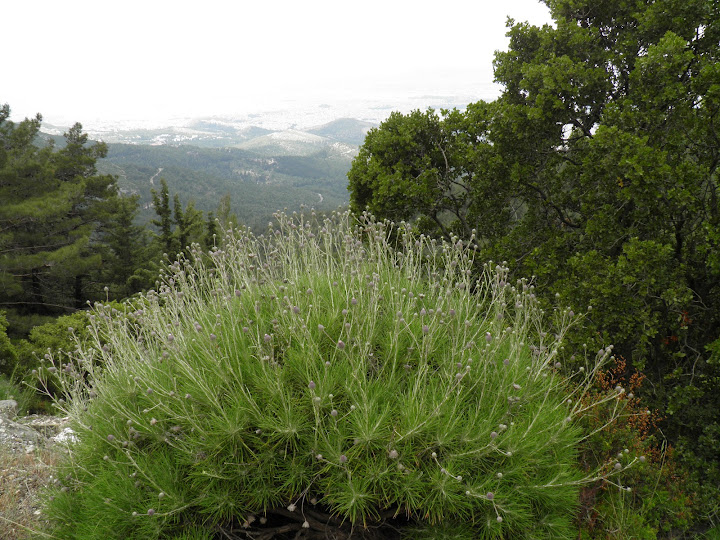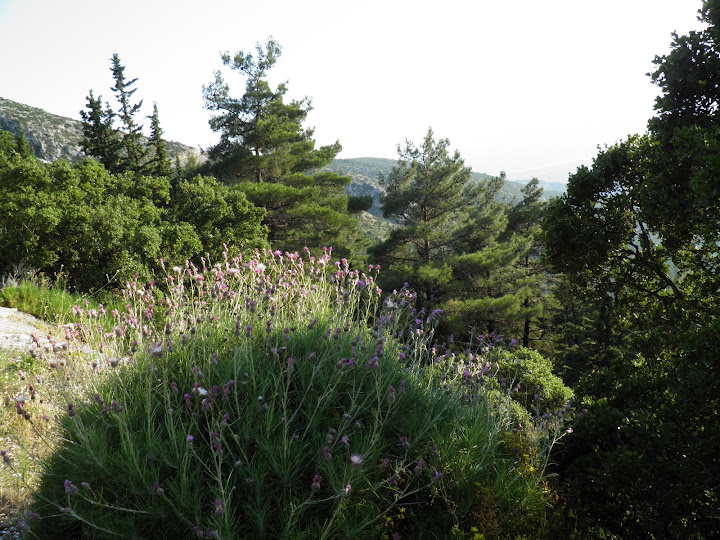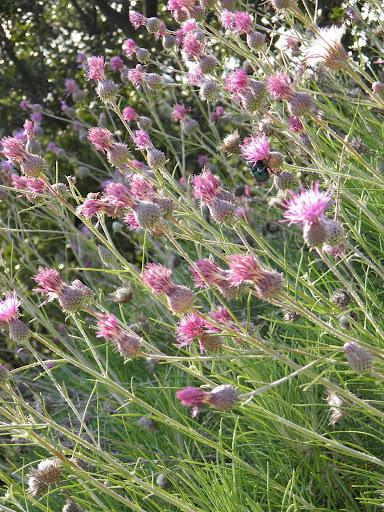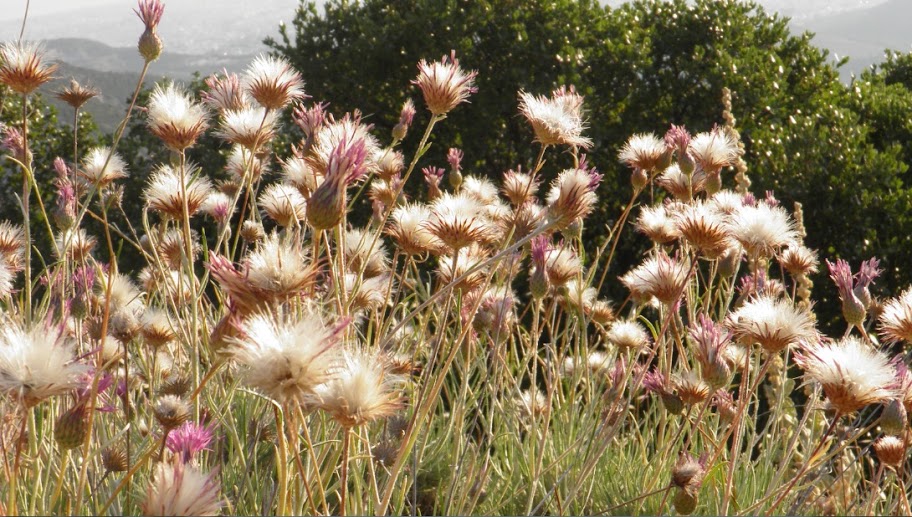I had the opportunity to admire these Ptilostemon chamaepeuce plants at MGS Sparoza, in their best season (early to mid -June for low altitudes in Attica)
This is a truly outstanding species, and it’s a pity that –to my knowledge- there isn’t a single nursery in Greece to provide it.
The photos below are taken from Hymettus above 500m, where ptilostemons bloom nearly one month later -and many of them are still in bloom.
I have also tried repeatedly to collect some seed, but unfortunately in every case the seeds seemed pretty damaged as there were holes on them.




